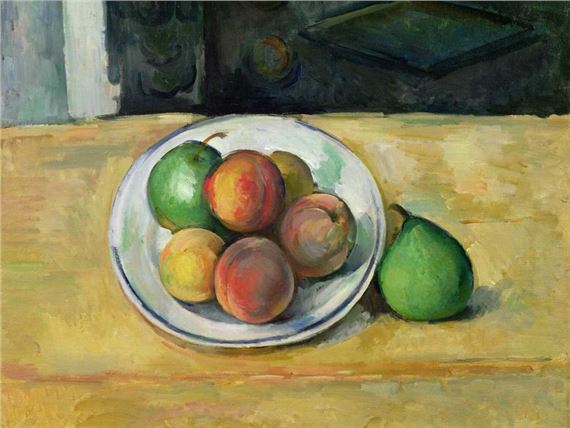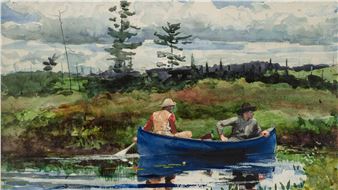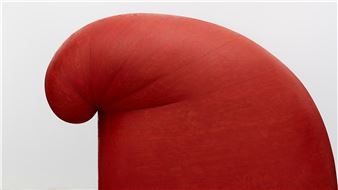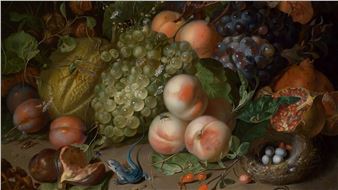Cûˋzanne: In and Out of Time
French painter Paul Cûˋzanne (1839ã1906) found complexity in the world around him and engaged with it through his art. His landscapes appear impossible to enter, his still lifes tilt forward at dizzying angles, and the sitters in his portraits withhold attention. Though he was a peer of the Impressionists, sometimes participating in their exhibitions and working alongside them, Cûˋzanneãs vision and art departs from theirs in ways both subtle and startling.
Featuring 12 paintings by Cûˋzanne in conversation with work by Degas, Pissarro, Renoir, and others, ãCûˋzanne: In and Out of Timeã looks at the trailblazing artist and considers what sets him apart. Similar subject matterãportraits, landscapes, and still lifesãdemonstrates a shared commitment between Cûˋzanne and his contemporaries to observing the material world. But Cûˋzanne avoided depicting the fleeting aspects of nature that absorbed the Impressionists, choosing instead to investigate space and form, observing and working in a protracted, unhurried way.
Of his process, Cûˋzanne once noted, ãI am progressing very slowly, for nature reveals itself to me in very complex forms.ã His work rewards careful looking, much like the methodical manner required to make it. With its compressed view and its subjectãs blank expression, the distinctly modern Madame Cûˋzanne in a Red Armchair (about 1877) appears at once intimate and distant. The landscape Turn in the Road (about 1881) is a complex arrangement of shapes and spaces that challenges viewersã perceptions. And Still Life with Peaches and Pears (about 1885ã87)ãwith a bowl of fruit viewed from above and a nearby pear seen from the side, casting its shadow to the rightãseems to capture two perspectives at once. Cûˋzanneãs work conveys a constant pushãpull of presence and absence, space and surface, time and timelessness.
Seeing Cûˋzanneãs paintings alongside those of his peers highlights what made his art distinctive when it was newãand what makes it so fascinating now.

Recommended for you
French painter Paul Cûˋzanne (1839ã1906) found complexity in the world around him and engaged with it through his art. His landscapes appear impossible to enter, his still lifes tilt forward at dizzying angles, and the sitters in his portraits withhold attention. Though he was a peer of the Impressionists, sometimes participating in their exhibitions and working alongside them, Cûˋzanneãs vision and art departs from theirs in ways both subtle and startling.
Featuring 12 paintings by Cûˋzanne in conversation with work by Degas, Pissarro, Renoir, and others, ãCûˋzanne: In and Out of Timeã looks at the trailblazing artist and considers what sets him apart. Similar subject matterãportraits, landscapes, and still lifesãdemonstrates a shared commitment between Cûˋzanne and his contemporaries to observing the material world. But Cûˋzanne avoided depicting the fleeting aspects of nature that absorbed the Impressionists, choosing instead to investigate space and form, observing and working in a protracted, unhurried way.
Of his process, Cûˋzanne once noted, ãI am progressing very slowly, for nature reveals itself to me in very complex forms.ã His work rewards careful looking, much like the methodical manner required to make it. With its compressed view and its subjectãs blank expression, the distinctly modern Madame Cûˋzanne in a Red Armchair (about 1877) appears at once intimate and distant. The landscape Turn in the Road (about 1881) is a complex arrangement of shapes and spaces that challenges viewersã perceptions. And Still Life with Peaches and Pears (about 1885ã87)ãwith a bowl of fruit viewed from above and a nearby pear seen from the side, casting its shadow to the rightãseems to capture two perspectives at once. Cûˋzanneãs work conveys a constant pushãpull of presence and absence, space and surface, time and timelessness.
Seeing Cûˋzanneãs paintings alongside those of his peers highlights what made his art distinctive when it was newãand what makes it so fascinating now.
Artists on show
Contact details

Related articles
ãOthers abide our question,ã Matthew Arnold said of Shakespeare, ãthou art free!ã1 Arnold meant that the Bard, in his sublime universality, soared above those petty reckonings that critics apply to all other cultural figures. Which makes one wonder whether Paul Cûˋzanne abides...
From elaborate table settings that included spoons specifically used for certain jellies to the 20th-century invention of the TV dinner, it is safe to say that the way we dine in the Western world has changed drastically.

 ARTISTS
ARTISTS














